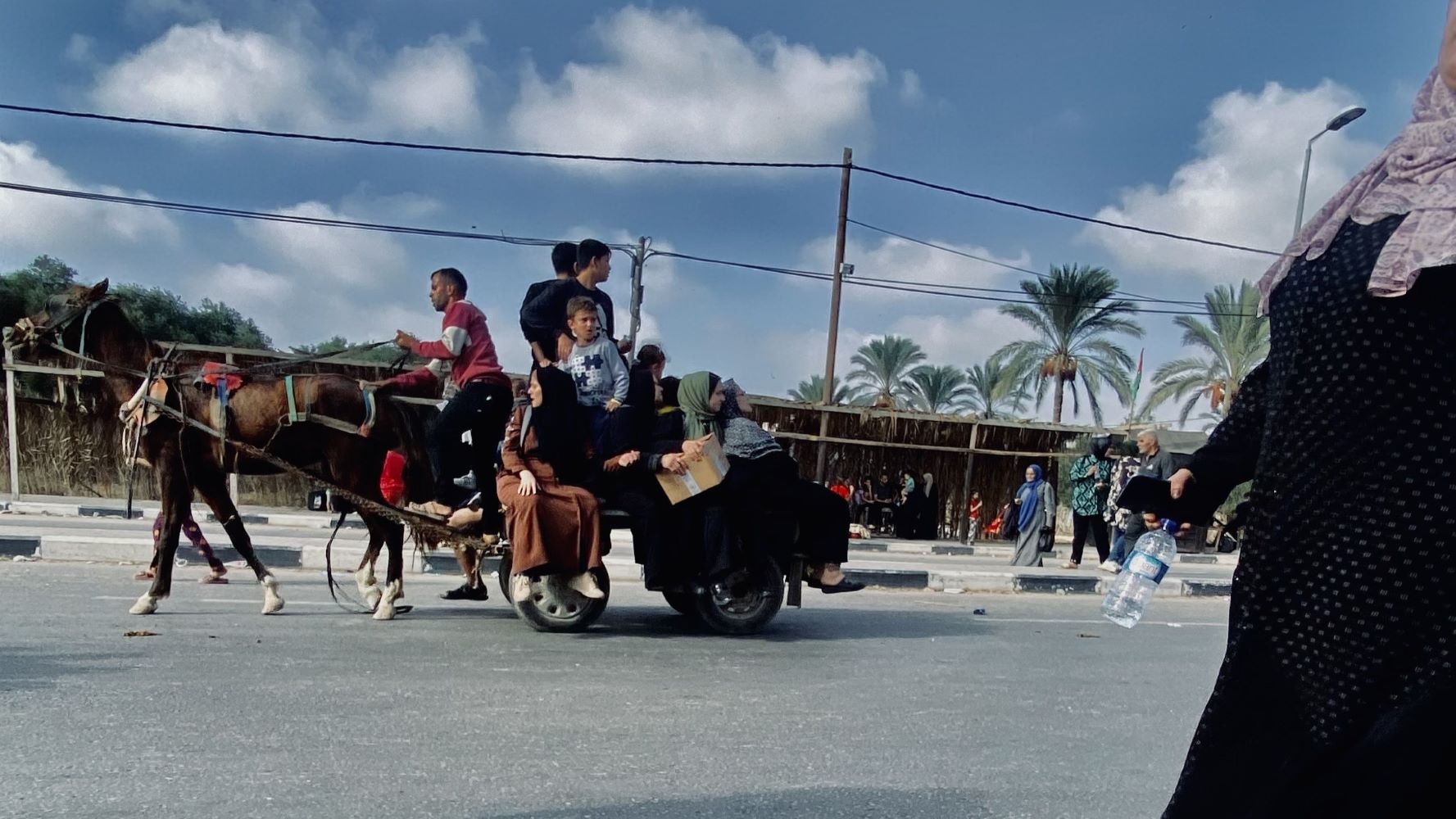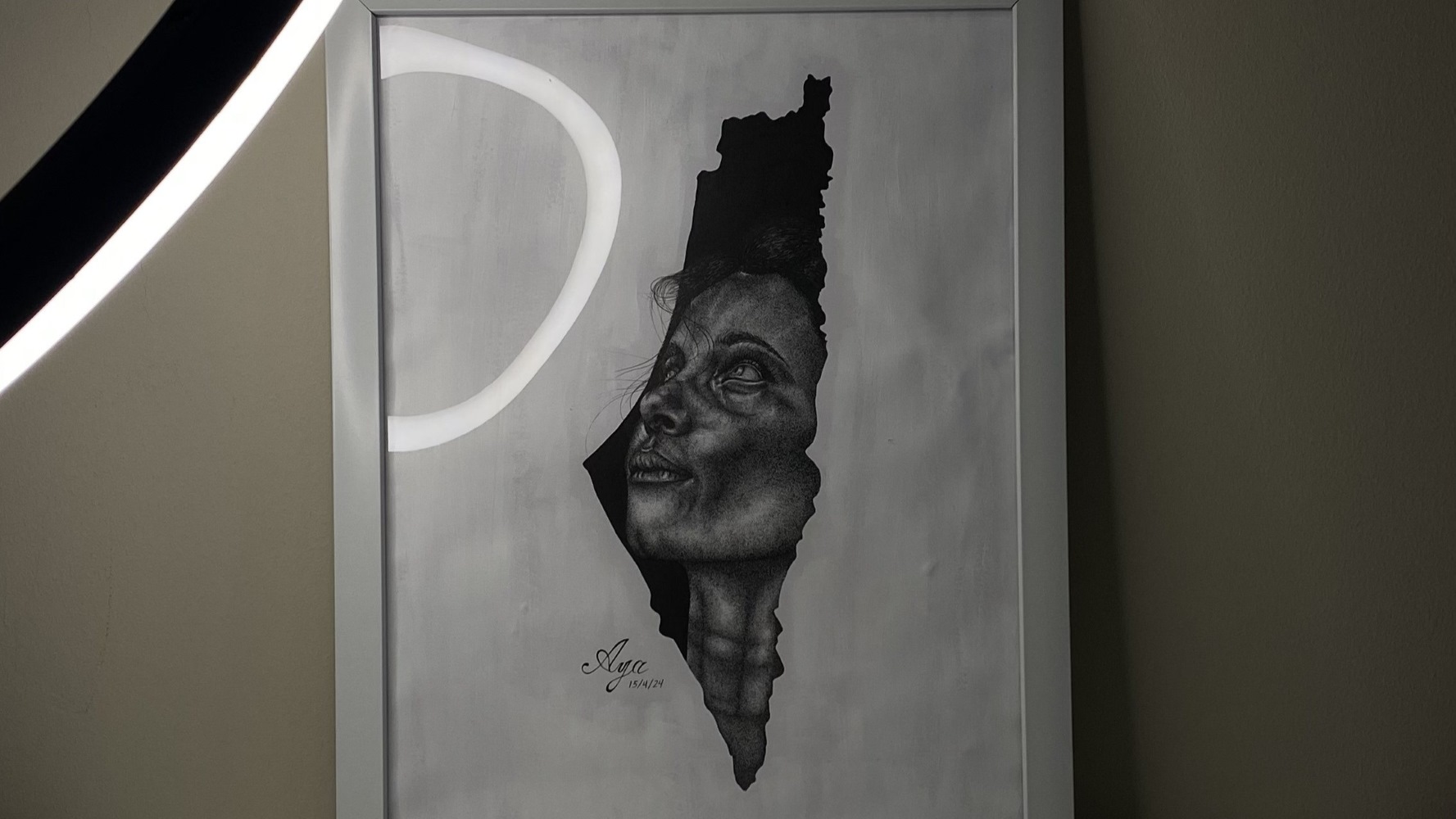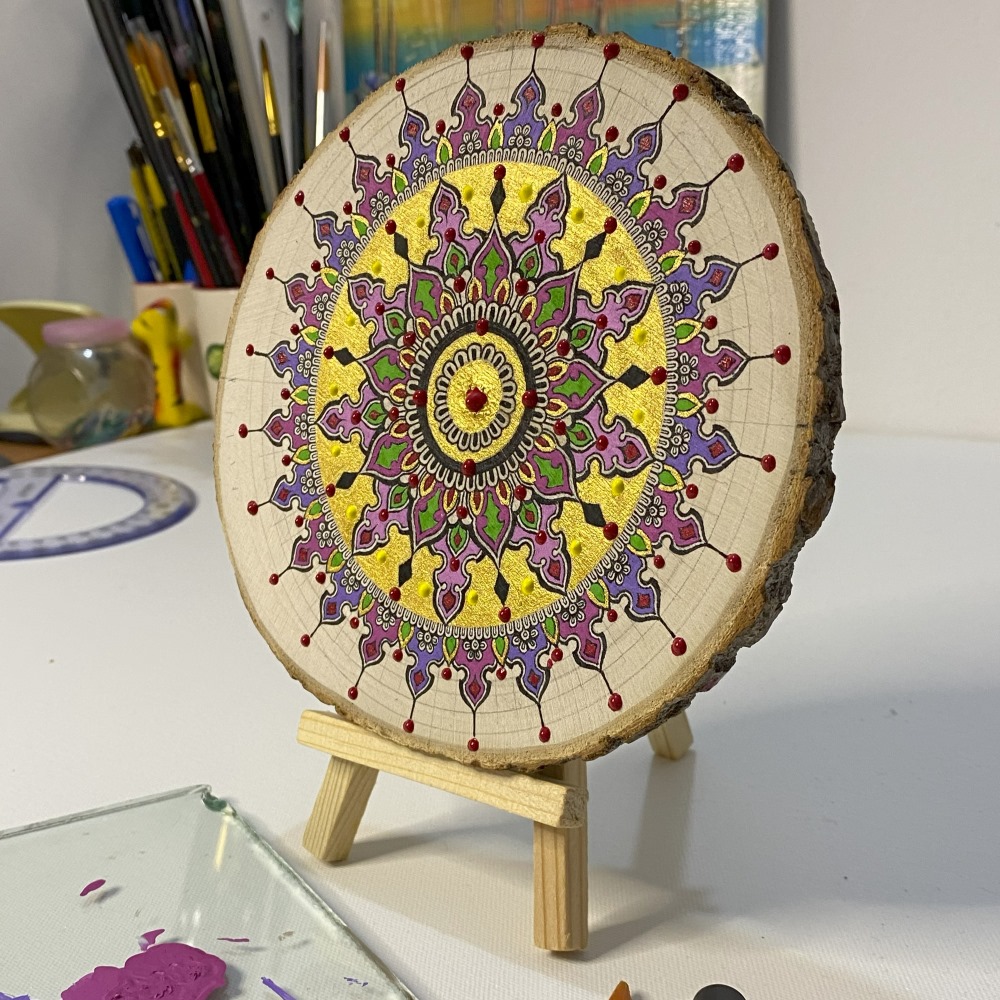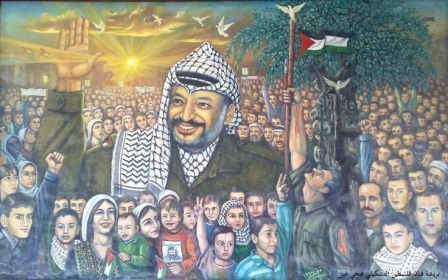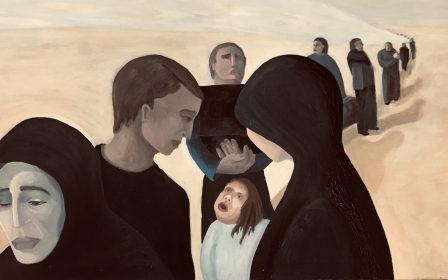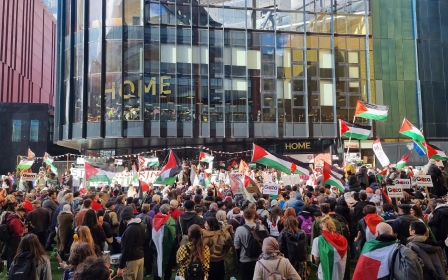Rebuilding after destruction: Palestinian artist Aya Zaqout starts a new life after escaping Gaza

The bombings started immediately after 7 October. Within weeks, 23-year-old dental intern and artist Aya Zaqout had grown accustomed to the sight of body parts scattered throughout her neighbourhood.
On 13 October, the Israeli military ordered Zaqout and other residents of northern Gaza to leave their homes in advance of a ground invasion.
She and her family initially stayed put as Israel ratcheted up the pressure on the besieged enclave’s civilian population.
Israel’s defence minister, Yoav Gallant, had announced a complete siege of the Palestinian territory.
“There will be no electricity, no food, no fuel - everything is closed," he said, adding: "We are fighting human animals.”
New MEE newsletter: Jerusalem Dispatch
Sign up to get the latest insights and analysis on Israel-Palestine, alongside Turkey Unpacked and other MEE newsletters
On 8 November, the twin threats of starvation and the Israeli military arrived on Zaqout’s doorstep.
Her family had no choice but to flee to the south of Gaza.
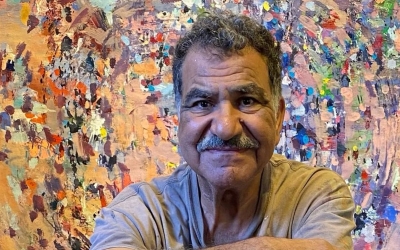
“We could only carry the basics: clothes and essentials. Thus began our journey into the unknown,” she tells Middle East Eye.
The journey to southern Gaza, around a half-hour drive under normal circumstances, had become a perilous gauntlet as Palestinians hauled their belongings by foot along bomb-damaged roads.
Consistent with other accounts previously reported by Middle East Eye, Zaqout says those fleeing were targeted by seemingly random fire from Israeli soldiers who flanked them.
“Martyrs lay on the ground, and there was random targeting. We were forced to raise a white flag and show our IDs,” Zaqout recalls, describing how young men were pulled aside by Israeli soldiers and made to strip.
Zaqout, who specialises in mandalas and intricate dot portraits, says the move south marked the end of her “old life”.
“I was compelled to leave behind everything I cherished: my paintings, which I had spent 10 years creating, all my drawing tools, my room, desk, bed, university belongings and memories, gifts from friends, and more.”
The ‘old life’
Before Israel's war on Gaza began, Zaqout had completed the academic portion of her dental training at Gaza’s al-Azhar University, which Israeli forces have since destroyed.
She was preparing for the internship part of her training, which would have allowed her to work as a dentist.
At the same time, her work as an artist was also beginning to gain traction among buyers and galleries abroad.
“Besides my dream of becoming a dentist and designing smiles, my main hobby since kindergarten has been drawing,” she says.
“I have made significant progress in the field of art over the past 10 years.”
As an artist, Zaqout has two main specialities: mandalas and dot drawings. Mandalas are intricate geometric patterns or calligraphy that revolve around a centre point, while dot drawings are created using a fine-point pen to form images entirely from individual dots.
The latter are almost spiritual, stemming from their use in various religious traditions to symbolise the underlying unity of the universe.
While mandala designs have historically appeared in most cultures, they are particularly prominent in eastern ones. The term “mandala” itself comes from Sanskrit, meaning “circle”.
Zaqout’s dot drawings have the effect of being both intricate, by virtue of the level of physical detail and expression they contain, and minimalist through their use of a simple black-and-white palette.
“I enjoy writing about each painting,” she says. “I don't just create art; I also narrate my feelings. Often, I leave it to the viewer to interpret and feel a personal connection to my work.”
As a Palestinian artist producing works in Gaza, Zaqout’s art was beginning to gain recognition beyond the enclave before the conflict began.
“I have participated in numerous exhibitions and projects in America and Britain and have sold many prints,” she says.
“It is worth noting that all of my participation has been with prints of my original paintings, not the originals themselves.”
She explained that even before the war, Israel’s blockade of Gaza meant that the enclave had no functioning postal system, making it nearly impossible to send her original artwork abroad.
Those originals were lost with the “old life” that ended in November 2023, a life she accepts will likely never return.
“It feels distant now and no longer exists, and I also doubt that it will return one day. I really hope it does,” she says.
“I am trying to accept reality somewhat and explore new adventures in my new life.”
The ‘new life’
The idea of being fortunate in Gaza is a relative concept, given the scale of destruction and loss nearly all of its residents have endured. More than 40,000 Palestinians have been killed over 11 months of war.
Even Zaqout’s fortune in being able to flee Gaza is tinged with sadness, as she did so alone, without her family, who continue to face the dangers posed by Israel’s military campaign.
'We are accustomed to rebuilding from destruction and starting over because we love life'
- Aya Zaqout, Palestinian artist
Her escape came through the Egyptian border seven months after fleeing her home in northern Gaza, a privilege that cost her $5,000.
The decision to leave came at the behest of her family, who hoped she would resume both her dental career and artistic pursuits.
In terms of practical achievements, Zaqout has more than fulfilled their hopes.
She is now in the fourth month of her dental training and, for the first time, she is shipping her original paintings to clients across the globe.
“I am at the beginning stages of creating a new collection,” she says.
She recently finished a mandala titled On This Earth, What Is Worth Living For? inspired by her recent experiences in her homeland.
An upcoming painting will focus on her experience of life in exile from Gaza.
Separated from those she loves most, Zaqout says she has been grappling with loneliness and guilt.
“I sleep peacefully while my family endures the sounds of bombing,” she says.
“I feel guilty because I am safe, while my family's roof could collapse on them at any moment. I feel guilty because I have access to clean water and food, while my family struggles to find these basic necessities.”
This guilt is compounded by the anxiety of not knowing when the war will end and figuring out a way to get her family out of Gaza.
In this context, Zaqout’s creative outlets have become a psychological release valve.
“Creating art has allowed me to channel my emotions and experiences into something tangible and beautiful, which has been particularly therapeutic during the turmoil of the past years,” she explains.
“Throughout the war and displacement, art provided me with a means to process my feelings and maintain a sense of normalcy. It has been a constant source of comfort and a way to stay connected with my dreams, even amid chaos.
“Painting has been not just a passion but a vital part of my psychological well-being, helping me cope with stress and grief.”
It is this therapeutic function, along with her dreams of representing the pain of Gaza’s people on an international stage, that has kept her going.
In the future she envisions, Zaqout’s work will be displayed in galleries across the world and she will be able to travel freely to attend her exhibitions, representing the resilience of her people.
“We are accustomed to rebuilding from destruction and starting over because we love life.”
Aya Zaqout publishes her artwork on her Instagram page
Middle East Eye delivers independent and unrivalled coverage and analysis of the Middle East, North Africa and beyond. To learn more about republishing this content and the associated fees, please fill out this form. More about MEE can be found here.


